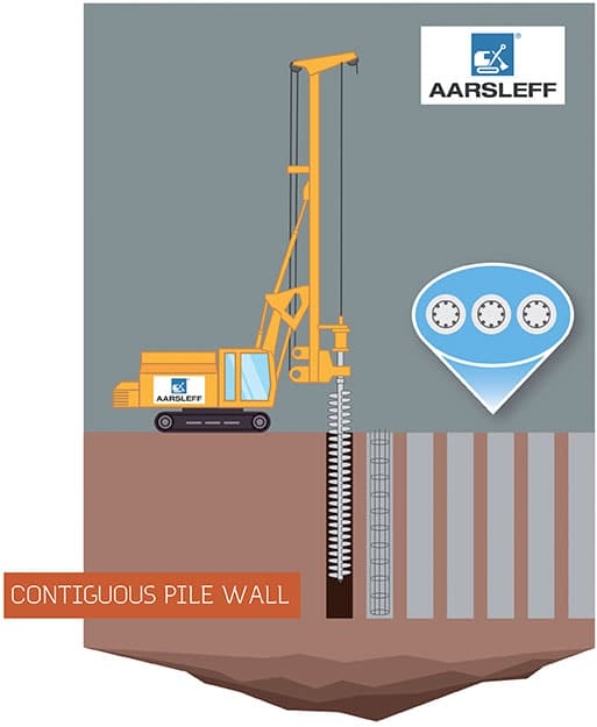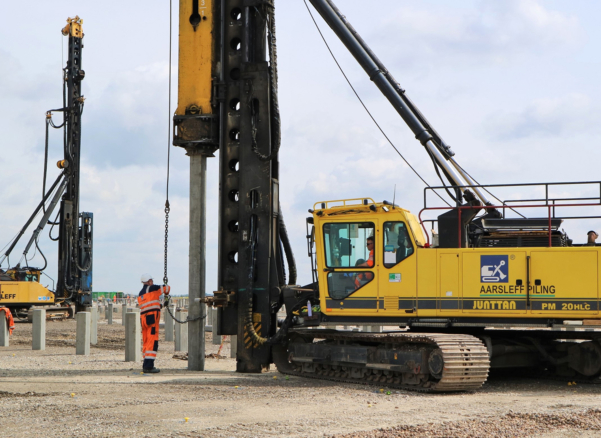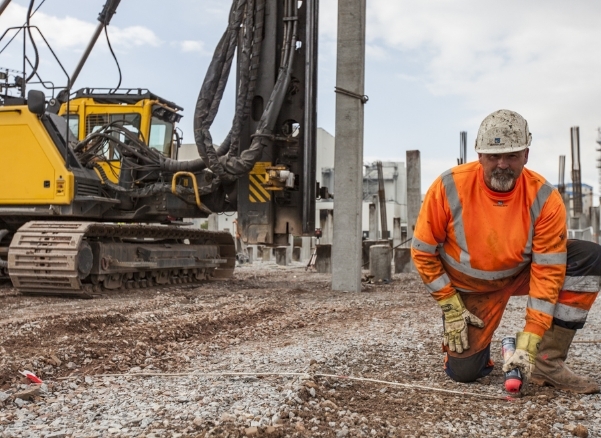What Are Contiguous Pile Walls?
Table of Contents
- About Contiguous Pile Walls
- Common Uses of Contiguous Pile Retaining Walls
- How Are Contiguous Pile Walls Constructed?
- Advantages
- An Example of a Contiguous Pile Wall Project
About Contiguous Pile Walls
A contiguous pile wall, also known as contig piles or contig wall, is a retaining wall system, mainly constructed using continuous flight auger (CFA) or rotary bored piling techniques. It consists of adjacent reinforced piles, which can include soft reinforcement (such as a cage) or firm reinforcement (such as a steel section). [1]
Contig piles can be used for both temporary and permanent retaining walls and utilised when groundwater ingress is not an issue. This method is suitable in a variety of soils where groundwater lies below the maximum excavation depth. The dimension of the gap between the piles typically ranges between 50 and 150mm. A permanent wall can be created, taking the form of a structural concrete facing wall tied to the piles or sprayed concrete.
Contiguous piling, or contig piling, is the ideal choice for earth retention systems in urban areas, where alternative retaining methods would not be applicable and where development space is limited.

Common Uses of Contiguous Pile Retaining Walls
Contiguous pile walls are employed across a range of engineering projects, including:
- Basement Construction – Providing lateral support during excavation to prevent ground movement and structural failure.
- Underground Car Parks – Ensuring structural integrity for large-scale underground parking facilities.
- Rail and Highway Infrastructure – Retaining earth in cuttings and embankments to maintain stability.
- Slope Stabilisation – Preventing soil erosion and landslides in areas with steep terrain.
- Flood Defenses – Supporting water management structures to mitigate flooding risks.
- Urban Excavations – Essential in cities with restricted space for alternative retaining solutions.
How Are Contiguous Pile Walls Constructed?
Contig piles are installed using suitable piling methods. The construction process generally goes as follows:
- Site Investigation & Design – A thorough geotechnical survey is conducted to assess ground conditions. The appropriate pile diameter, spacing, and depth are determined based on structural and environmental factors.
- Pile Installation – Using drilling rigs, individual piles are installed in a continuous sequence. The piles are typically reinforced with steel cages for additional strength and durability.
- Excavation & Ground Support – Additional temporary support measures, such as props or anchors, may be installed. The wall is not watertight and the soil between the piles is exposed during excavation. Reinforced mesh and spray concrete are applied to secure the exposed soil.
- Finishing Works – Depending on project requirements, the wall can be finished with a facing material, waterproofing, or additional structural elements. Drainage measures, such as weep holes, may be integrated to manage water pressure effectively.
Advantages
The main advantages of contiguous walls are:
- Easier to build in load variations, with no requirement for a guidewall
- It’s an efficient and cost-effective solution for creating a retaining structure, compared to Diaphragm walls
- They can be used for more flexible geometry than a diaphragm wall, making them a versatile solution
- Provides load-bearing capacity
- Can be installed in difficult ground conditions
- Ideal for metropolitan cities (urbanisation makes the cost of land high and so it is increasingly common to go deeper into the ground)
- CFA piles are considered more economical than diaphragm walls in small to medium-scale projects due to the reduction in cost and time of site operations
- Suitable in crowded urban areas, where traditional retaining methods would otherwise encroach the adjoining properties
- The presence of footings of adjacent buildings and underground utilities on a site makes contig piles the ideal choice for supporting an excavation
- Can be installed with minimal vibration levels
- Have a faster speed of installation when compared with secant piled walls
An Example of a Contiguous Pile Wall Project
At Aarsleff Ground Engineering, we’re an experienced contractor and have the specialist plant and team to install contiguous pile retaining walls and benefit from having significant experience in designing, installing, and testing in a variety of diameters and locations across Northern Europe.
From November 2019 to January 2020, our team installed 1,517m of contiguous piles at the University of Leeds for the expansion of their Business School. The wall was constructed using 600mm CFA piles, which acted as bearing piles for the new 6-story teaching block as well as forming the walls for the basement. The 5.85m retaining wall was designed to be cantilevered in the temporary condition, then propped by the basement and ground floor slab in the permanent condition. To learn more about this project, read here.









